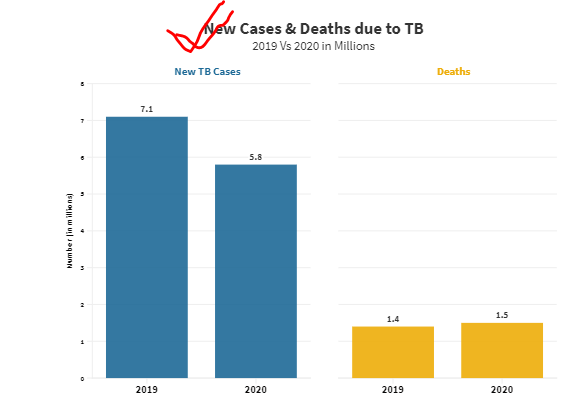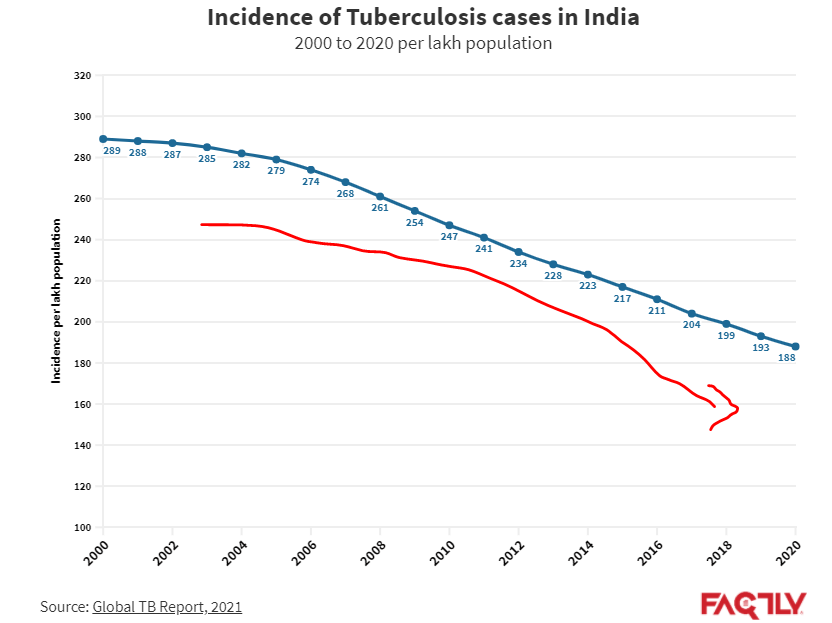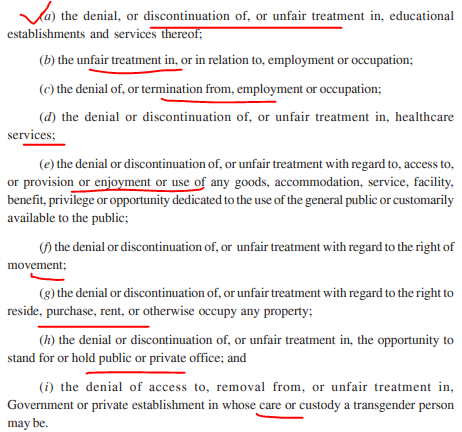Goaltide Daily Current Affairs 2021
Current Affair 1:
Global tuberculosis report 2021
Recently, the World Health Organization (WHO) published the Global Tuberculosis Report 2021 which is an annual publication being published since 1997. The report provides a comprehensive and up-to-date assessment of the TB epidemic and is based primarily on data gathered by WHO in annual rounds of data collection. In 2021, data reported by 197 countries and territories which account for more than 99% of the world’s population and TB cases have been considered.


Major findings:
Big drops in TB case notifications

TB deaths increased in 2020

The trend in India is similar to the Global trend
Just like the global trend, the incidence of TB cases in India has reduced in the last two decades. In the year 2000, the incidence was as high as 289 cases per lakh population which have now reduced to 188 cases per lakh population. This is the lowest incidence since the year 2000.



Current Affair 2:
Why Facebook wants to rebrand itself for the ‘Metaverse’?
Facebook plans to rename itself. And the change could be announced at the company’s annual Connect Conference on October 28 or earlier, according to a report by The Verge. For Facebook, the ‘rebranding’ isn’t just about a switch in the company name but a reflection of the company’s growing ambitions and focus on a new area: metaverse.
There can be many complicated answers to these questions. But a simplistic way to look at the metaverse is as a parallel, virtual, world where users can have different identities, possessions and characters.
In the complex explanation, Metaverse is supposed to be the post-Internet world, a decentralised computing platform of sorts if you will, which is continuous, and live. It is an entirely digital economy, and the way most Silicon Valley intellectuals see this, metaverse exists both in the digital and physical realm.
Virtual reality (VR), the use of computer modelling and simulation that enables a person to interact with an artificial three-dimensional (3-D) visual or another sensory environment.
- VR applications immerse the user in a computer-generated environment that simulates reality through the use of interactive devices, which send and receive information and are worn as goggles, headsets, gloves, or body suits.
- In a typical VR format, a user wearing a helmet with a stereoscopic screen views animated images of a simulated environment.
- The illusion of “being there” (telepresence) is affected by motion sensors that pick up the user’s movements and adjust the view on the screen accordingly, usually in real time (the instant the user’s movement takes place).
- Thus, a user can tour a simulated suite of rooms, experiencing changing viewpoints and perspectives that are convincingly related to his own head turnings and steps.
- Wearing data gloves equipped with force- feedback devices that provide the sensation of touch, the user can even pick up and manipulate objects that he sees in the virtual environment.
Augmented reality, in computer programming, a process of combining or “augmenting” video or photographic displays by overlaying the images with useful computer-generated data.
- The earliest applications of augmented reality were almost certainly the “heads-up-displays” (HUDs) used in military airplanes and tanks, in which instrument panel-type information is projected onto the same cockpit canopy or viewfinder through which a crew member sees the external surroundings.
- Faster computer processors have made it feasible to combine such data displays with real-time video.
- Among the earliest and most prominent examples of this type of augmented reality, as first shown on the Fox Broadcasting Company’s network in the mid-1990s, were the yellow first-down stripes superimposed on television images of American gridiron football fields and the virtual flight paths added to help television viewers track the paths of hockey pucks and golf balls.
The distinctions between VR and AR come down to the devices they require and the experience itself:
- AR uses a real-world setting while VR is completely virtual
- AR users can control their presence in the real world; VR users are controlled by the system
- VR requires a headset device, but AR can be accessed with a smartphone
- AR enhances both the virtual and real world while VR only enhances a fictional reality
Current Affair 3:
The rules (under Electricity Act 2003)

Ministry of Power has notified the rule for promotion of clean energy to meet the India’s commitment towards Climate Change. The rules (under Electricity Act 2003) classify Renewable Energy (RE) plants as 'Must Run'. The following are the rules regarding 'Must Run' RE power plants:
- The Rules provide that a must-run power plant shall not be subjected to curtailment or regulation of generation or supply of electricity on account of any commercial consideration.
- The electricity generated from a must-run power plant may be curtailed or regulated only in the event of any technical constraint in the electricity grid or for reasons of security of the electricity grid.
- In the event of a curtailment of supply from a must-run power plant, compensation shall be payable by the procurer to the must-run power plant at the rates specified in the agreement for purchase or supply of electricity.
- These rules will help in achieving the targets of renewable energy generation (175 GW of RE capacity by 2022 and 450 GW by 2030). This will ensure that the consumers get green and clean power and secure a healthy environment for the future generation.
Current Affair 4:
Transgender Persons (Protection of Rights) Act, 2019.
Ok, we will go through Act in detail.
We should always take care of these Acts. The Acts based o gender equality, social issues, gender empowerment are very important. Any statement they can pick from Act and can ask you in Prelims. For example:
- Does Certification of identity of Transgender can be provided only by competent court?
- Does National Council of Transgender Person set up under this Act chaired by Secretary or Union Minister?
- Does Act define Gender Identity, Transgender Persons, inter sex variations?
After reading this document everything can be answered.
a. Section 2(k) defines a transgender person to include both individual identities & socio-cultural identities.

b. The Act also defines intersex variations. 
Criticism: Does this give any substantial rights to intersex persons, apart from whatever is part of being recognized as transgender persons? This Act does not even ban the forced and unnecessary sex reassignment surgeries performed on intersex infants. The Parliament failed to discuss or ban the surgery, something which a Single-Judge Bench of the Madras High Court did when an intersex person approached the Court. Why do you call this Act 'Protection of Rights'? Whose rights and interests are it actually protecting? Debatable.
c. The Act has nowhere defined Gender Identity. This makes me wonder, what is the objective of this? Why has the Parliament not discussed gender identity, gender non-conforming persons, expression or even sexual orientation? Debatable.
d. The Bill prohibits the discrimination against a transgender person, including denial of service or unfair treatment in relation to: (i) education; (ii) employment; (iii) healthcare; (iv) access to, or enjoyment of goods, facilities, opportunities available to the public; (v) right to movement; (vi) right to reside, rent, or otherwise occupy property; (vii) opportunity to hold public or private office; and (viii) access to a government or private establishment in whose care or custody a transgender person is
e. Every transgender person shall have a right to reside and be included in his household. If the immediate family is unable to care for the transgender person, the person may be placed in a rehabilitation centre, on the orders of a competent court.

f. No government or private entity can discriminate against a transgender person in employment matters, including recruitment, and promotion. Every establishment is required to designate a person to be a complaint officer to deal with complaints in relation to the Act.

g. Educational institutions funded or recognised by the relevant government shall provide inclusive education, sports and recreational facilities for transgender persons, without discrimination.

h. The government must take steps to provide health facilities to transgender persons including separate HIV surveillance centres, and sex reassignment surgeries. The government shall review medical curriculum to address health issues of transgender persons and provide comprehensive medical insurance schemes for them.

i. A transgender person may make an application to the District Magistrate for a certificate of identity, indicating the gender as ‘transgender’. A revised certificate may be obtained only if the individual undergoes surgery to change their gender either as a male or a female.

j. National Council for Transgender persons (NCT):

Other members include representatives of the NITI Aayog, and the National Human Rights Commission. State governments will also be represented. The Council will also consist of five members from the transgender community and five experts from non-governmental organizations.
k. The Council will advise the central government as well as monitor the impact of policies, legislation and projects with respect to transgender persons. It will also redress the grievances of transgender persons.

l. The Bill recognizes the following offences against transgender persons: (i) forced or bonded labour (excluding compulsory government service for public purposes), (ii) denial of use of public places, (iii) removal from household, and village, (iv) physical, sexual, verbal, emotional or economic abuse. Penalties for these offences vary between six months and two years, and a fine.
<< Previous Next >>



